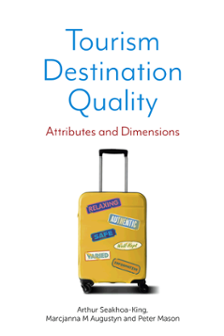
Index
ISBN: 978-1-83909-559-7, eISBN: 978-1-83909-558-0
Publication date: 27 November 2020
Citation
Seakhoa-King, A., Augustyn, M.M. and Mason, P. (2020), "Index", Tourism Destination Quality, Emerald Publishing Limited, Leeds, pp. 287-293. https://doi.org/10.1108/978-1-83909-558-020201014
Publisher
:Emerald Publishing Limited
Copyright © 2021 Arthur Seakhoa-King, Marcjanna M Augustyn and Peter Mason
INDEX
- Prelims
- Chapter 1 Introduction
- Chapter 2 Approaches to Conceptualising and Measuring Quality
- Chapter 3 Conceptualising and Measuring Quality in Tourism
- Chapter 4 Methodology of the TDQ Study
- Chapter 5 Findings of the Qualitative Phase of the TDQ Study
- Chapter 6 Findings of the Quantitative Phase of the TDQ Study
- Chapter 7 Discussion of the TDQ Study's Findings
- Chapter 8 Conclusions and Recommendations
- Appendices
- References
- Index